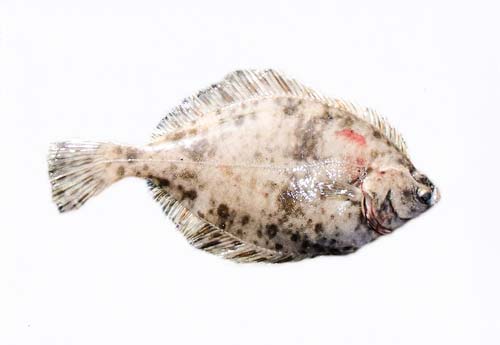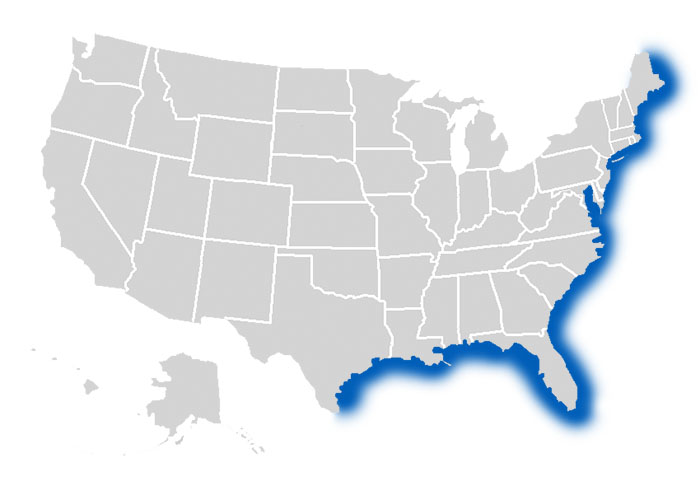The flounder’s agility makes it a great light tackle gaming fish. The best flounders are caught between 10 and 25 miles of the coast around wrecks and reefs. In the early spring, flounders are found in the shallower waters of bays and inlets. The best methods for catching flounder in drift fishing along the bottom and jigging.

Habitat: Bay, Ocean
How to identify Flounder
The eyes of the Summer Flounder are on its left side of their head (with the blind eye on the other side.) The left-sided eyes a camouflaged, blending in with the seafloor. Its body has randomly scattered markings (10-14) that look like eyes. Its blind eye is void of color, appearing white and unremarkable. Both jaws have well-developed teeth. Soft rays are present on both the dorsal (85-94) and anal (60-63) fins. The upper limb of the first gill arch contains 5-6 gill rakers whereas, the lower limb has 11-21.
Where to catch Flounder
Flounders are present in the western waters of the Atlantic from Maine down to South Carolina (potentially as far south as northeast Florida.) These fish thrive in only 6 inches of water during the summer, with larger flounders preferring deeper waters up to 60 feet deep. They aggressively prey on fish feeding in mid to bottom waters. Along the surface of the water, it’s not unusual to find Flounders pursuing baitfish. The sandy/muddy bottoms of shoreline waters (bays, harbors, canals, pier/bridge pilings) and basin areas are preferred by Flounders.

The following are habitats where you can catch Flounder:
How to catch Flounder
Drift fishing is prevalent among anglers because it yields the best results. It not only maintains constant motion for the bait/lure and has better coverage of the bottom. Anglers rely on shoreline/pier casting, trolling, and chumming while anchored. Baits that interest Flounders include strip bait (shark, menhaden, porgy, fluke, sea robin, young bluefish, herring) or blue crab chunks. Lures to use are spinners, feathers, and small spoons. A pause between the fish detecting the bait and them biting should be allowed; otherwise, the bait will be gone. When fishing inshore, it’s advantageous to do so on running tides. Catching larger fish comes later in the season.
The following are effective fishing methods and techniques for catching Flounder:
Best Lures, Bait & Tackle to catch Flounder
The best bait for catching flounders includes minnows, squid, live finger mullet (for fall fishing), live spot and shrimp. Effective lures for catching flounder include jigs from 1-2 ounces with 4-6 inch soft plastic bodies, soft plastic mullets, and bucktails with or without plastic tails (or bait added.) Using specialized flounder rigs such as the tandem flounder rig or pompano rig can improve your presentation and catch rate.
The following are fishing lures, bait and tackle that can be used to catch Flounder:



